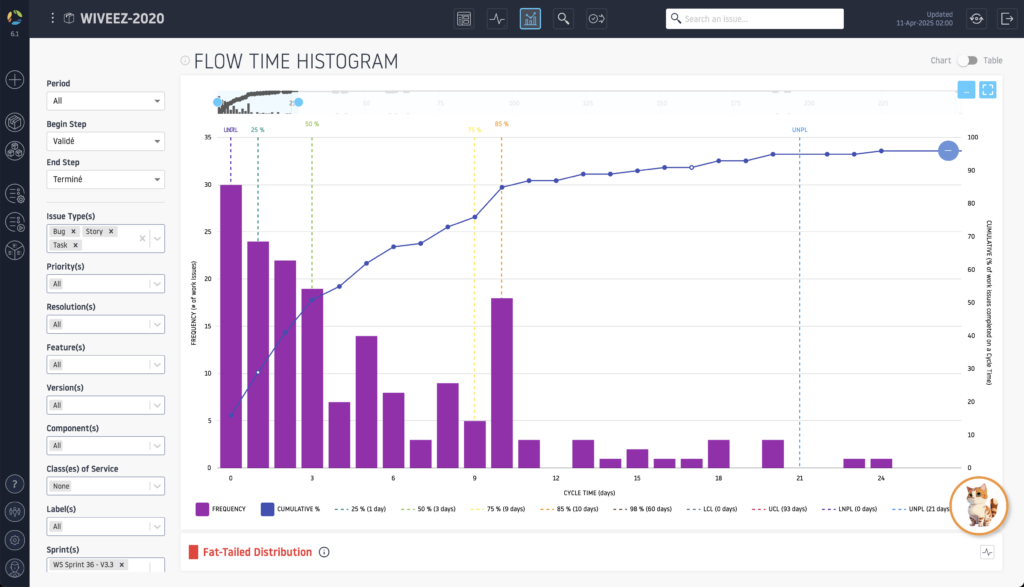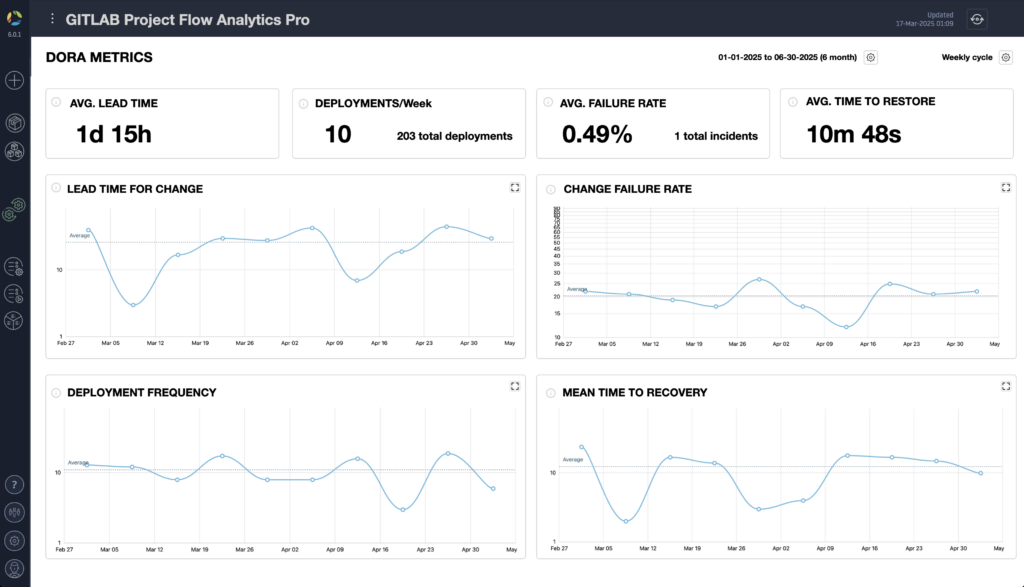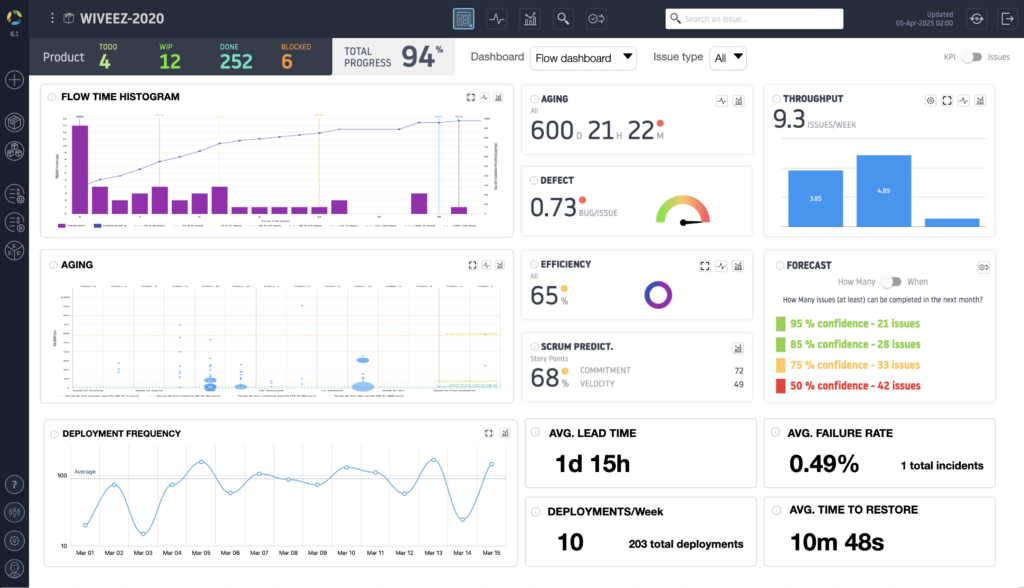
Flow Metrics vs DORA Metrics
Understanding Their Complementary Roles in Improving Agile and DevOps Processes
In the ever-changing world of software development, organizations are continually looking for ways to improve their development and deployment practices.
Two sets of metrics stand out for assessing and improving the performance of software development teams: Flow Metrics and DORA Metrics.
Although different, these two sets of metrics are not opposed; in fact, they are complementary, each providing unique insights into critical aspects of the software development process.
This article explores the differences between these metrics, their respective areas of application, and how they can be used together to improve development and deployment processes.
What are Flow Metrics?
Flow metrics are indicators designed to measure the effectiveness and efficiency of the software development process.
They focus on the “flow” of work through the development system, from ideation to delivery.
These metrics help teams visualize and understand how work is progressing, where bottlenecks occur, and how ongoing work affects the team’s ability to deliver value. The five main flow metrics are:
- Flow Velocity: measures the number of work items completed in a given time interval.
- Flow Efficiency: evaluates the time a work item is actively worked on relative to the total time spent in the system.
- Flow Time: calculates the total time a work item spends in the system, from input to output.
- Work in Progress (WIP): Quantifies the number of work items currently in progress in the system.
- Flow Distribution: Analyzes the distribution of different types of work (such as features, bug fixes, or technical debt tasks) within the team’s workflow, allowing you to identify priorities and adjust resources accordingly.

What are DORA Metrics?
DORA Metrics, on the other hand, are specifically designed to assess the performance of DevOps practices.
They focus on four key performance indicators that are essential for understanding and improving a team’s software delivery capabilities. These metrics are:
- Deployment Frequency (DF): measures how often the organization deploys code to production.
- Change Lead Time (LT): the time it takes to go from commit to production.
- Mean Time to Restore (MTTR): the time it takes to restore a service after a failure or issue.
- Change Failure Rate (CFR): the percentage of deployments that result in a failure in production.

When to use them?
Flow metrics are particularly useful in contexts where teams are looking to optimize their workflow and improve the fluidity and efficiency of their development processes. They are often used in Lean-Agile environments to measure and improve the team’s ability to deliver value quickly.
DORA metrics, on the other hand, are primarily used in DevOps environments to measure and improve the performance of deployment and maintenance processes. They allow teams to focus on improving quality, reducing cycle times, and minimizing the negative impacts of changes in production.
Conclusion
Although Flow Metrics and DORA Metrics serve different aspects of the software development process, they are deeply complementary.
Together, they provide a comprehensive view of team performance, from the efficiency of the development process to the reliability and quality of production deployment.
Flow Metrics can help identify upstream issues that affect DORA Metrics performance, while DORA Metrics can highlight the results of improvements made through the analysis and optimization of deployment and recovery practices, thus enriching the team’s overall ability to respond effectively and maintain operational stability.




